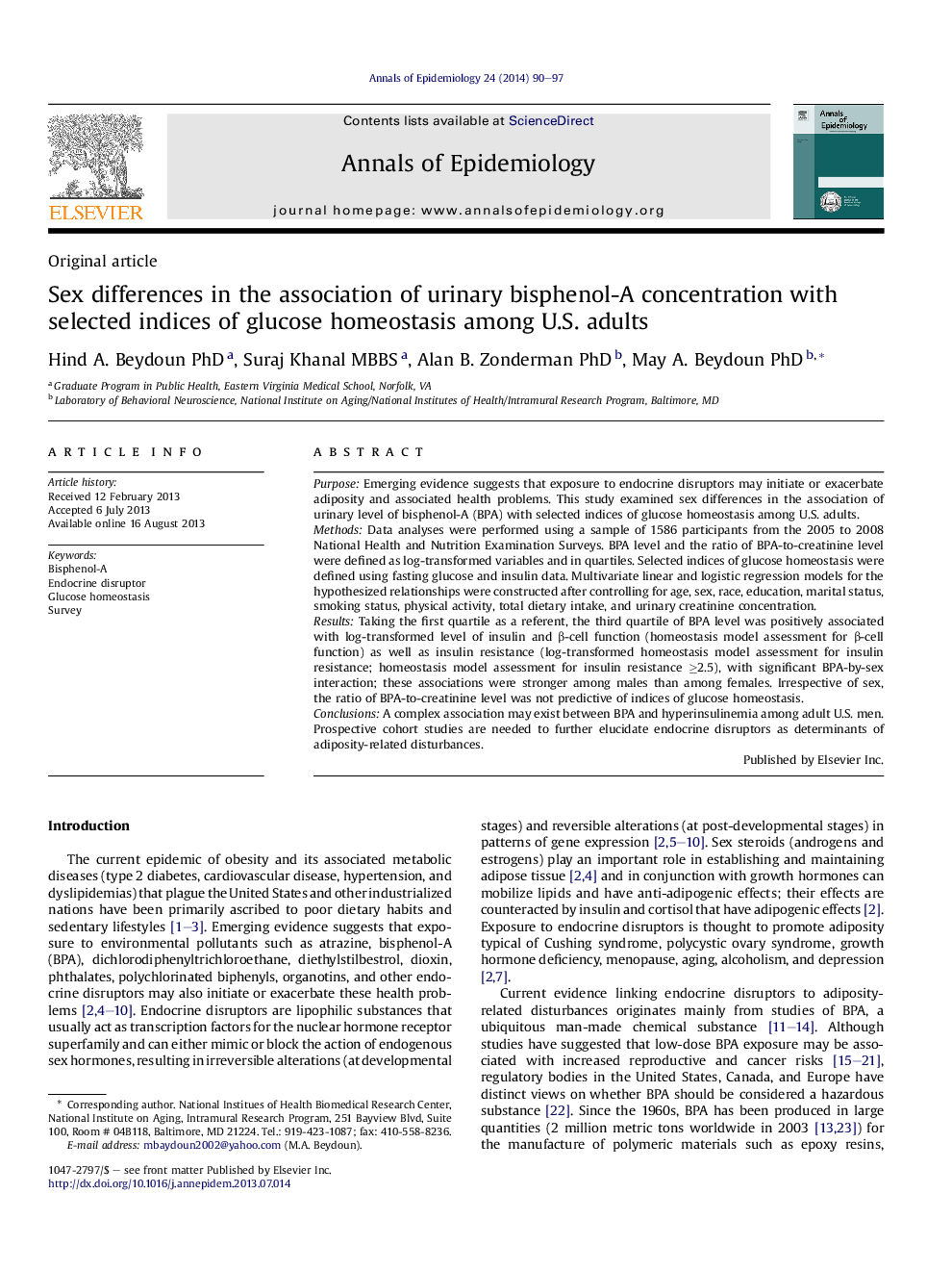| Article ID | Journal | Published Year | Pages | File Type |
|---|---|---|---|---|
| 3444318 | Annals of Epidemiology | 2014 | 8 Pages |
PurposeEmerging evidence suggests that exposure to endocrine disruptors may initiate or exacerbate adiposity and associated health problems. This study examined sex differences in the association of urinary level of bisphenol-A (BPA) with selected indices of glucose homeostasis among U.S. adults.MethodsData analyses were performed using a sample of 1586 participants from the 2005 to 2008 National Health and Nutrition Examination Surveys. BPA level and the ratio of BPA-to-creatinine level were defined as log-transformed variables and in quartiles. Selected indices of glucose homeostasis were defined using fasting glucose and insulin data. Multivariate linear and logistic regression models for the hypothesized relationships were constructed after controlling for age, sex, race, education, marital status, smoking status, physical activity, total dietary intake, and urinary creatinine concentration.ResultsTaking the first quartile as a referent, the third quartile of BPA level was positively associated with log-transformed level of insulin and β-cell function (homeostasis model assessment for β-cell function) as well as insulin resistance (log-transformed homeostasis model assessment for insulin resistance; homeostasis model assessment for insulin resistance ≥2.5), with significant BPA-by-sex interaction; these associations were stronger among males than among females. Irrespective of sex, the ratio of BPA-to-creatinine level was not predictive of indices of glucose homeostasis.ConclusionsA complex association may exist between BPA and hyperinsulinemia among adult U.S. men. Prospective cohort studies are needed to further elucidate endocrine disruptors as determinants of adiposity-related disturbances.
